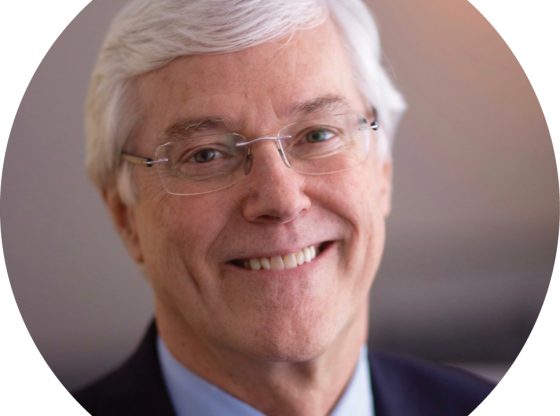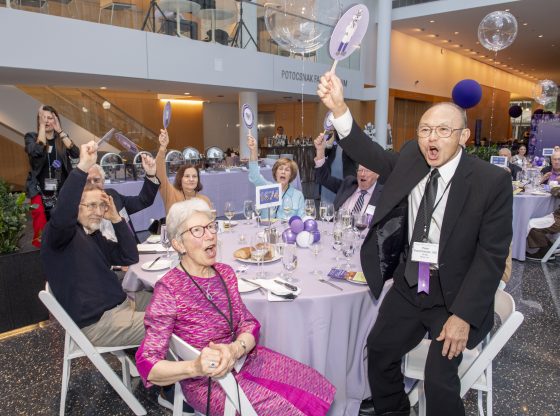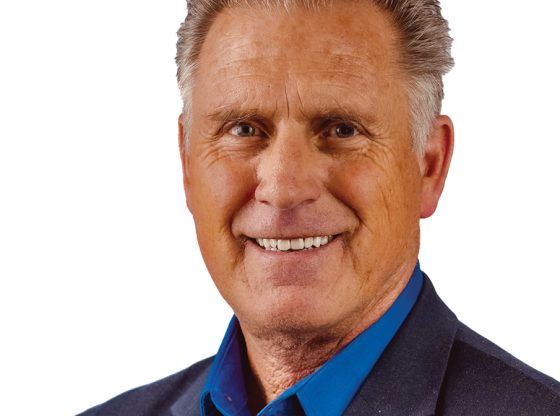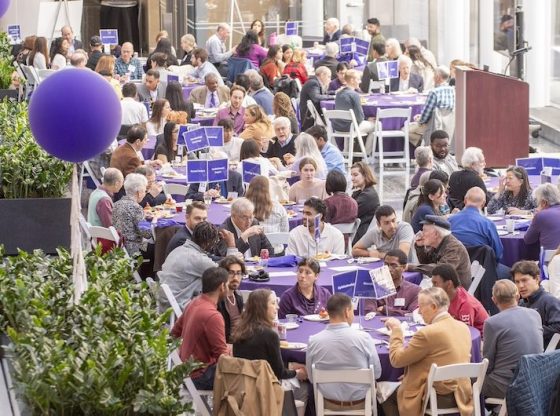A New Way to Beat Bacteria
Scott Hultgren, ’87 PhD, is developing new antibiotic-sparing drugs to treat urinary tract infections based on his decades-long research on host-bacteria interactions.
By Bridget Kuehn

Each week, Scott Hultgren, ’87 PhD, fields calls and emails from both women experiencing chronic pain from recurrent urinary tract infections (UTIs) and their physicians asking about the experimental therapies he’s developing. Many of these women have been treated with repeated rounds of antibiotics and have had their quality of life suffer because of the discomfort caused by the infection or the side effects of the antibiotics.
“We need something because antibiotics aren’t working,” says Hultgren, the Helen L. Stoever Professor of Molecular Microbiology and Director of the Center for Women’s Infectious Disease Research at Washington University School of Medicine in St. Louis.
Urinary tract infections are one of the most common infections treated in the United States, and they disproportionately affect women, Hultgren notes. About half of all women will have a urinary tract infection in their lifetime, and about one in four will experience recurrent UTIs.
“It is a big gap that we’re trying to fill,” he says. But after 30 years of research detailing how Escherichia Coli (E coli.), the bacteria that causes most UTIs, binds to the bladder, Hultgren and his colleagues are on the verge of translating their discovery into innovative, antibiotic-sparing treatments and new prevention approaches for UTIs and other common and difficult-to-treat infections.
FROM GERMAPHOBE TO EXPERT
Growing up in a small town in Indiana, Hultgren is the son of an award-winning high school chemistry teacher whose former students would frequently return to visit.
“My dad had a knack for reaching kids and bringing out the best in them,” he explains. “Part of me wanted to train young people for careers like my dad did.”
Following in his father’s footsteps, he started as a chemistry major at Indiana University. But a microbiology course with the late Walter Konetzka, PhD, turned a childhood fear of germs into a fascination with microbes and microbiology. Hultgren enjoyed the overlap with immunology and understanding how the immune system responds to pathogens, the structural biology involved in understanding how the pathogens interact with their host cells, and the role of biochemistry and biophysics.
“Microbiology is important to understand to cure many diseases,” he says. “It blends all these disciplines.”
Hultgren graduated with a degree in microbiology from Indiana University in 1981 and was hired as a research associate in the Department of Pathology at Northwestern. There, Hultgren met Anthony J Schaeffer, ’68 MD, the Herman L. Kretschmer Professor of Urology, and began working in his laboratory studying how E. coli clings to the lining of the urinary tract, causing infections. That’s when Hultgren began his decades-long studies of how hairlike fibers called pili help the bacteria colonize the urinary tract and cause infections. “Tony was a superstar and one of the few urologists studying infectious diseases,” Hultgren maintains. “He is still an important part of my life today.”
The work inspired Hultgren to pursue a graduate degree at Northwestern, and he continued his research on pili during his graduate studies with his late mentor James Duncan, DDS, PhD, a professor in the Department of Microbiology and Immunology.
“Jim was an amazing mentor,” says Hultgren. “He was incredibly humble and there for you every day. We had a great relationship, a great friendship.”
Hultgren developed strong friendships with some of his graduate school classmates and orchestrated an annual outing to a Chicago Cubs baseball game for his classmates.
“I’m grateful for the opportunities I had at Northwestern,” he asserts. “They catapulted me into my postdoctoral studies and today they remain one of the best Microbiology Departments in the world with the likes of Hank Seifert and Nick Cianciotto.”
Hultgren completed his postdoctoral studies at the University of Umeå in Sweden in the laboratory of Staffan Normark, PhD, who ran one of the first departments in the world devoted to host-pathogen biology. “We had the eyes of the world on us. It was very exciting,” Hultgren says. “To this day, we are still living in Nomark’s vision.”
Umeå is near the Artic Circle and worlds away from Chicago and Hultgren’s beloved Cubs, but it still holds a special place in his heart. “It was a very different lifestyle, very simple,” Hultgren explains. “My wife and I still have friends there.”
Over time, Hultgren showed that proteins on the tip of pili called adhesins mediate the interaction between the bacteria and the urinary tract. His work has earned him membership in the National Academies of Science and Medicine, the National Academy of Inventors, and the American Academy of Arts and Sciences.
“My laboratory has gone on to dissect that system, which is critical to all kinds of host-pathogen interactions,” he says. “We take a very interdisciplinary approach.”
We’ve written a blueprint for developing new anti-adhesin drugs, and we’re going to use it for other diseases.
Scott Hultgren, ’87 PhD
BREAKING A VICIOUS CYCLE
Physicians treat most UTIs with antibiotics, which can contribute to the emergence of antibiotic resistance and increase the risk of recurrent UTIs.
“The more we treat these infections with antibiotics, the more resistance we build up,” Hultgren says. “It’s a vicious cycle because one of the most significant risk factors for developing a urinary tract infection is use of antibiotics.”
Hultgren explained that antibiotic use can relieve discomfort in patients with UTIs and help their symptoms resolve. But they also disrupt the patient’s microbiome, killing beneficial bacteria that protect against pathogens, leaving them more vulnerable to recurrent infections.
“It makes it easier for pathogens to get back into the gut and recolonize the urinary tract,” Hultgren explains.
Hultgren’s laboratory has developed some alternate, antibiotic-sparing treatment approaches that disrupt the host-pathogen interactions that enable bacteria to colonize the urinary tract. Adhesins help bacteria to stick to mannosylated glycoproteins on the surface of bladder cells, allowing them to invade the cells and multiply in the bladder. Hultgren’s laboratory has developed molecules called mannosides that outcompete bacteria attaching to the mannosylated glycoproteins, preventing bacteria from getting a foothold in the bladder. Mannosides developed by Glaxo-Smith-Kline (GSK) are currently being tested in a phase 1b clinical trial run by GSK. Hultgren said mannosides may also reduce gut colonization with UTI-causing E. coli.
“A mannoside can disrupt that vicious cycle because you are not killing anything,” he says. “You are just unsticking the bacteria.”
The team also has a vaccine targeting bacterial adhesins entering phase 2 clinical trials. The vaccine causes the immune system to make antibodies against adhesins, preventing the bacteria from sticking to the bladder. The antibodies also flag the bacteria for destruction by the immune system, providing a one-two punch.
“Having things I’ve been working on for 30 years going into clinical trials has been a big career moment for me,” he says.
If the trials are successful, scientists will likely apply similar approaches to other infections, Hultgren says. Hultgren’s laboratory is already working on a vaccine targeting an adhesin on Acinetobacter. This bacterium is one of the most common causes of catheter-associated urinary tract infections and a frequent cause of multidrug-resistant diseases.
“We’ve discovered the adhesin and what it is binding to, and we are developing therapeutics to prevent binding,” he asserts. “It’s exciting because multidrug-resistant infections are a big problem worldwide. They are hard to treat and can be very dangerous.”
Hultgren is hopeful that developing new antibiotic-sparing approaches will interrupt the cycle that contributes to rising rates of increasingly drug-resistant bacteria.
“We’ve written a blueprint for developing new anti-adhesin drugs, and we’re going to use it for other diseases.”









